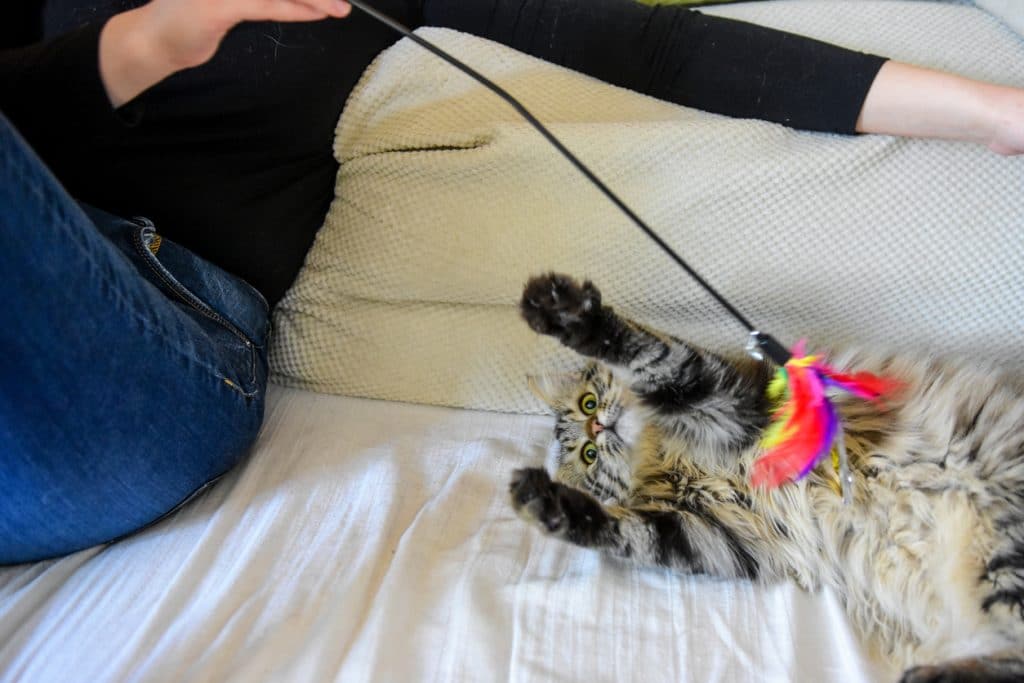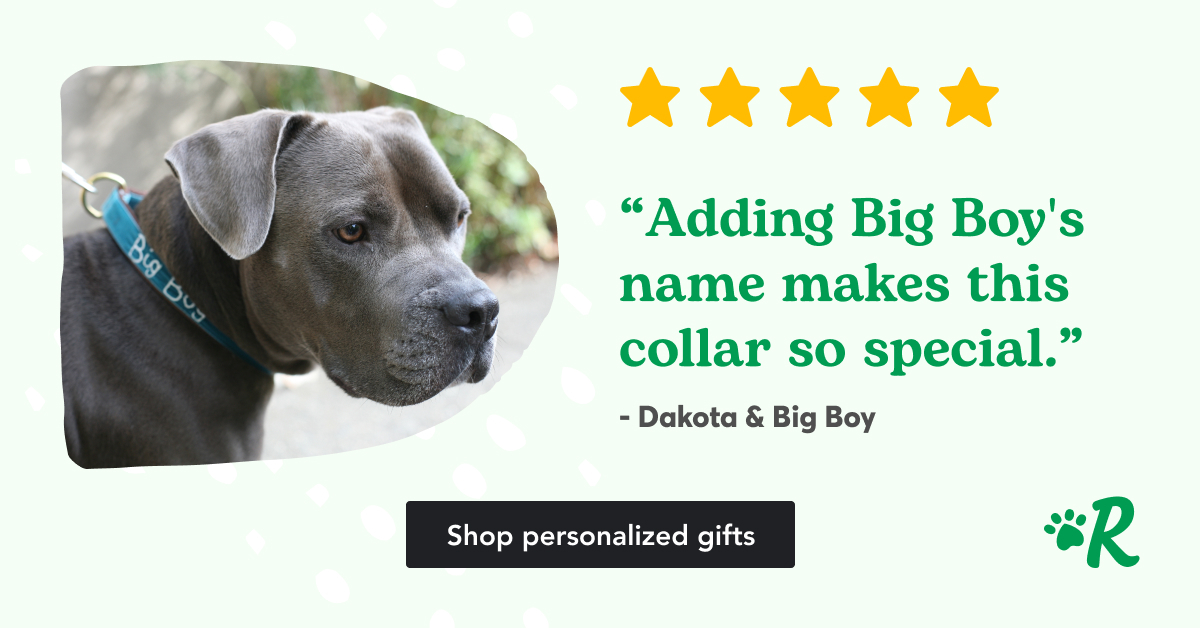Those of us who have been able to work from home during the pandemic have done our best to adapt our pet- and human-filled households to try to stay productive, but it hasn’t been without trial and error—some hacks and tricks we’ve tried along the way have worked better than others.
For example, I’ve learned the best place for my cat’s exercise wheel is not in my office, directly behind my computer, because she has a habit of starting her workouts as soon as I log in for a virtual meeting. And while some pet-loving work-from-homers might welcome the spectacle of my cat at full sprint on what’s basically a giant hamster wheel, others may find it distracting, or worse, unprofessional. (And sometimes that person is me.)
If you’re wondering what the secret is to working from home with a cat (or any other pet, for that matter), read on for some tried-and-tested tips from a number of Rover employees and blog contributors who volunteered their experience, along with a handful of other working pet parents interviewed for this article.

iStock/FG Trade
5 Benefits of Working from Home With a Cat or Dog
The benefits of more time spent with our pets during the pandemic have been widely reported, but what about working from home with them?
From where I’m sitting, my commute has been replaced with more snuggles, I’ve been able to schedule grooming and vet appointments around a more flexible schedule, and my cats love the new concept called “lunch.”
Some pet parents find the benefits so rewarding that according to one study, nearly 1 in 2 Gen Zers and 1 in 3 millennials say they might look for another job if their employer expects them to return to work without their pets.
Here’s what our panel of pet parents reported.
Pets help set work-life boundaries
A common complaint among those working from home is the inability to switch off when the home is also the office. Rover’s Jaimee LaTorra says her dog Enzo helps her turn off for the day and focus on her (and his) personal needs. “When we go on our second walk for 60-90 minutes at the end of the day,” Jaimee explains, “this is my mental cue to stop working.”
Pets reduce stress
Pets make us happy! It’s not just their cute little snores in the background of your Zoom meeting, there are many studies that indicate petting a cat or a dog can help lower stress, and even just being around pets can make difficult situations more manageable. Go ahead, take a stress-relieving petting break, we’ll wait.
Pets reduce loneliness and depression
Pets may not replace your co-workers and in-office conversation at the water cooler, but they can ease feelings of isolation. Researchers have found that owning and caring for a pet provides motivation, a strong sense of security, and happiness.
Pets provide healthy work-day breaks
“Working with pets in the house ensures that I take breaks, stand up, walk around, eat lunch, and admire the world outside my windows,” shares cat mom and The Dog People contributor, Karen Anderson.
Pets keep you flexible for what matters most
“As much as I miss being close to my team at the office on a daily basis, spending time with my family and working alongside my pup Storm has been a welcomed change,” Steve Ball, CEO of people and pet nutrition company, H&H Group, tells The Dog People.
6 Ways to Manage Your Work Life and Pet Life
1. Make a routine
Creating a daily routine will help everyone adjust to working from home and promote an environment with the least amount of interruptions. Your routine should include what serves you and your pet the best—like physical and mental stimulation before starting the workday and meals at the same time each day.
It’s okay to feel stressed about sharing your schedule and office with your pet—having you around could be stressful for your pet, too. “When my cat Stacie needs my attention and is annoying, I sympathize because it was definitely a readjustment having me home all the time,” Rover SEO Editor Kathleen Frost says about interrupting Stacie’s nap time. For pets like Stacie, scheduling a remote office day at the local coffee shop or in a pet-free zone of the house will let her catch some zzz’s and curb unwanted behaviors.
If you’re concerned your pet may have separation anxiety, talk with your trusted veterinarian to address any behavioral concerns and ask how you can set your pet up for success when it comes to making a routine that includes time away from one another.
2. Create a pet-free workspace
“I make other rooms cat-friendly and my office far less friendly,” says cat mom Karen, whose cats much prefer the sunny living room or the plethora of cat trees around the house than her office.
The same trick can work for dogs as well. By creating more positive associations in other rooms, your pet may be able to more comfortably snooze away from you as you type away on your report. You might also want to consider baby gates or play pens.
For cats who insist on the desk (or keyboard) for resting, grooming, and perching, you can try giving your cat her own laptop, to work along with you, as Rover blog editor, Gwendolyn Elliott, tried with her cat, Ramona. Don’t have spare electronics? Not to worry, my cats also love this cat scratch computer complete with a mouse!
3. Block out quality time with your pet
“I try to schedule focused playtime with each cat during the day,” says cat mom and The Dog People contributor, Zibby Wilder. “Every hour or so, I will take 10 minutes to check in with everyone and see what they need. It could be a quick brushing, some playtime, or some snuggles. This helps ensure I get my work done and they also get some attention.”
4. Reward good behavior
One of the first steps to keeping your cat off your desk and out of your workspace is to make it less appealing and other spaces more appealing—you can do this with positive reinforcement. When your cat is exhibiting behavior you like, tell them with physical praise (petting), verbal praise, or a treat. When your cat is exhibiting behavior you don’t want to encourage, try your best to not show them attention.
If your pet is lured to your desk by curiosity, then it’s smart to provide alternative elevated spaces like cat trees, window perches, and wall-mounted shelves or hammocks that provide a clear view of your workstation. Don’t forget to reward them for interacting with these spaces!
Rover’s shopping editor Allie Draper says this works wonders for pups, too. “One odd trick I’ve learned to do when my dog Oscar is feeling antsy is to elevate his bed so he can see my desk,” she says. “When he can see that it’s just a whole lot of typing and scrolling going on up here, he settles down pretty quickly.”
5. Know when to keep your pet preoccupied
Working from home with my cats has given me the permission to splurge on attention-grabbing toys and mentally simulating puzzles for my active kitties. Other pet parents at Rover have found success with robotic toys, laser toys, and, of course, the classic Kong filled with peanut butter. Not unlike human children, a little screen time goes a long way, too—Bird T.V. is a tried-and-true channel in my household!

iStock/kovaciclea
6. Keep calm and be flexible
“I think the best thing is just to be able to go with the flow,” says Zibby. “If someone is frustrating or bugging me, it’s simply because they want some attention.” Sometimes things won’t, or don’t, go according to plan—give yourself and your pets permission to know it’s OK.
Banfield Pet Hospital President Brian Garish knows a little about this—he was in mid-sentence during a work-from-home presentation when his security system went into full alert. Someone wasn’t breaking in—Garish’s cat Kenji had been spending his quarantine learning how to break out and was making an escape. “I always wondered how my cats spent their days while I was at the office,” says Garish, who now knows.
Pets being pets, some will get into mischief while we’re busy trying to work. We might not all need front door cams like Garish, but anticipating and preparing for your pet’s needs before your big meeting, and being nimble and prepared for unforeseen events, can go a long way in staying on track throughout the day.
The Takeaway
Pets are goofy, sometimes awkward, often hilarious, and never perfect. In this way, they’re a lot like us—and our human co-workers, too. When and if things go awry as you strive to work productively from home with your pet, remember—things go sideways in physical offices, too.
When working from home with a cat or dog, it’s important to take all those cat butts in the camera and those weird emails accidentally sent by your dog (Subject: zihejgjghyuvcgkwyuGLC) in stride; after all, the fact that pets are funny and make us laugh is one of the biggest benefits of pet parenthood.
What’s more, as co-workers, pets won’t gossip about you, or remind you you’re on deadline—and they definitely won’t be asking you to work overtime. All they’re going to do is love you, and probably look really cute asking for treats—hard to imagine a better colleague and work friend.
